Combine nature and counting with this outdoor math activity for kids. Using supplies you can find outside, explore the concept of 100 with preschool and elementary learners in a hands-on engaging activity. Learn more below about the knowledge acquisition and skill application with “Counting to 100.”
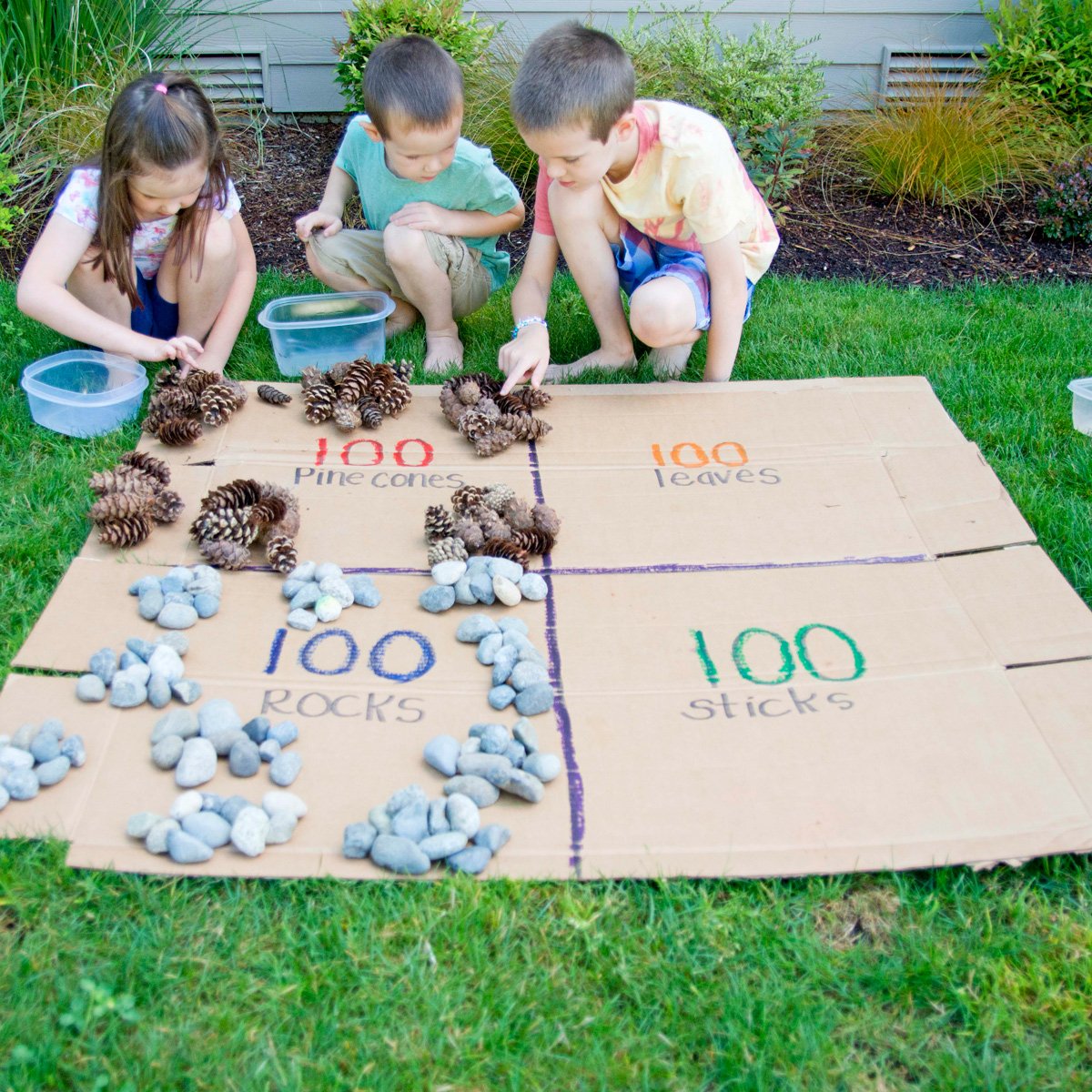
- Counting to 100 in the Best Outdoor Math Activity!
- Why This Outdoor Counting Activity Works
- How to Set Up the Outdoor Counting Activity
- Learning Through Play The Benefits of Outdoor Counting
- Learning Standards Addressed
- Making the Abstract Concrete Why 100 Matters
- Extensions and Variations
- Why Outdoor Math Activities Matter
Counting to 100 in the Best Outdoor Math Activity!
Looking for a fun, hands-on way to teach kids about counting to 100? This outdoor math activity is the perfect solution! Not only is it a fantastic way to build math skills, but it also gets kids outside, exploring, and using nature as their learning tools.
RELATED: Looking for more outdoor activities for kids? I’ve got a great list!
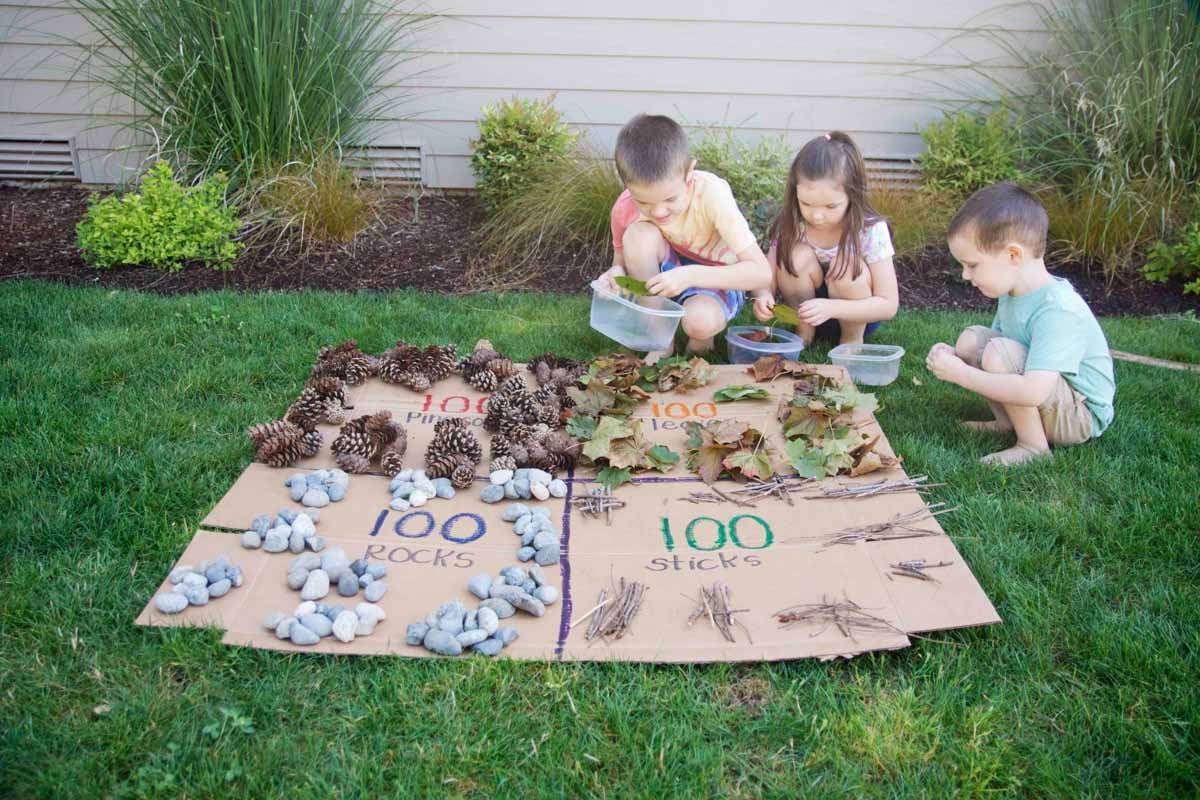
Why This Outdoor Counting Activity Works
This is what I like to call an onion activity — it has layers upon layers of learning built right in. Here’s what kids get to explore with this outdoor math adventure:
- Counting practice — building confidence and familiarity with numbers up to 100.
- Grouping by tens — understanding the concept of 10 groups of 10.
- Seeing 100 in real life — making the abstract concept of 100 concrete.
- Natural exploration — using outdoor items like rocks, sticks, leaves, and pine cones to represent numbers.
- Connection to Nature — giving kids a reason to engage deeply with the world around them while learning.
And let’s not forget: it’s the perfect sittervising activity (my favorite kind of activity — where you get to sit while they do the learning and exploring). More on that in a minute.

Looking for more structure each day?
Check out Playing Preschool: Busy Toddler’s 190-day at-home activities program
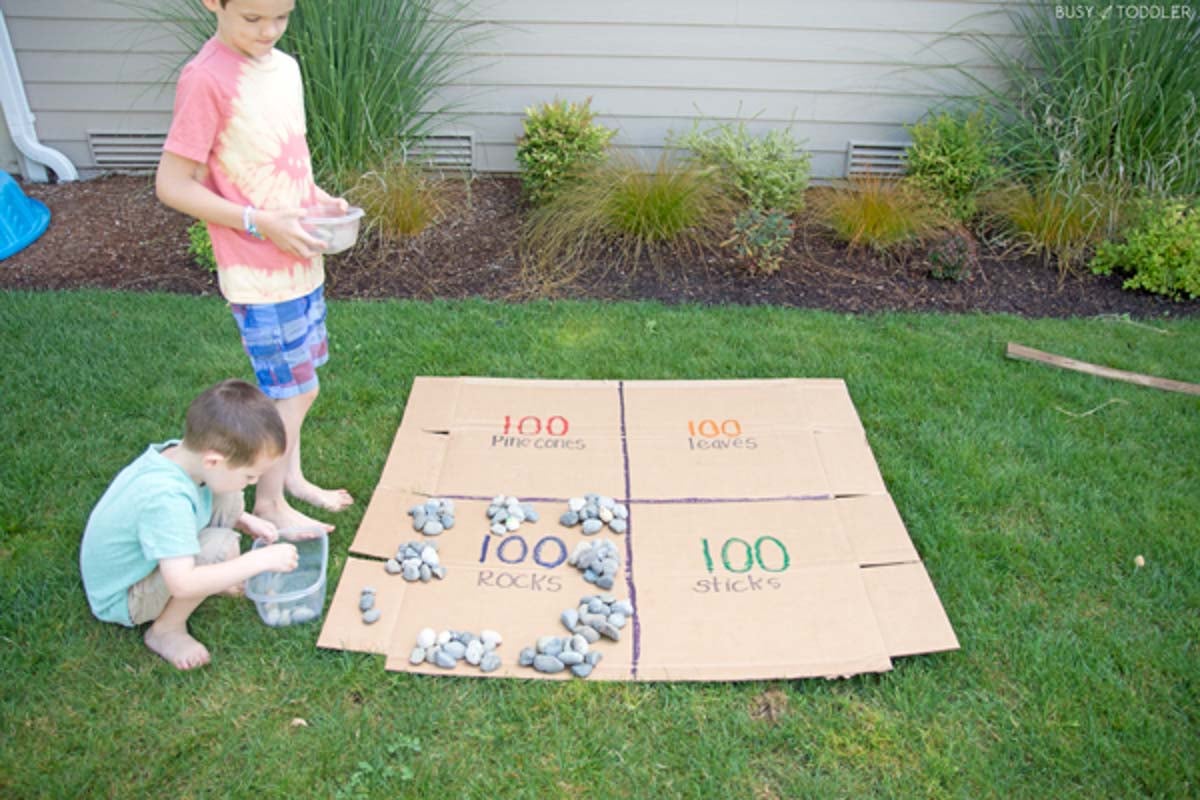
How to Set Up the Outdoor Counting Activity
Materials You’ll Need:
- A large cardboard box or a big sheet of paper
- Marker
- Outdoor items: rocks, sticks, leaves, pine cones — whatever you have access to!
Step 1: Create the Counting Board
On your piece of cardboard, divide it into four sections and label each space with the number 100. This will be the visual reminder of what you’re collecting.
Step 2: Start Collecting in Groups of 10
One hundred is a big number — it’s a lot! To make it manageable and less overwhelming, break it down into ten groups of ten. This chunking method is perfect for little ones to understand the concept of 100.
Encourage your child to find groups of 10 outdoor items. For younger kids, you may want to guide their counting or have them listen to older siblings. This repeated counting practice is crucial for building number sense and memorizing the sequence of numbers.
Step 3: Count the Groups Together
Once they’ve collected their 10 groups of 10, it’s time to count them all together. Depending on your child’s age and skills, you might want to lead the counting or encourage them to try it themselves. The moment you see all 100 objects lined up — it’s powerful.
Step 4: Reflect and Compare
Here’s where the magic happens: take a step back and look at all the groups of 100. Ask questions:
- Are these all 100?
- Which collection looks like it has more?
- How can this small pile and that big pile both have 100?
This opens the door to discussing how size doesn’t determine quantity — a big math concept for little minds!
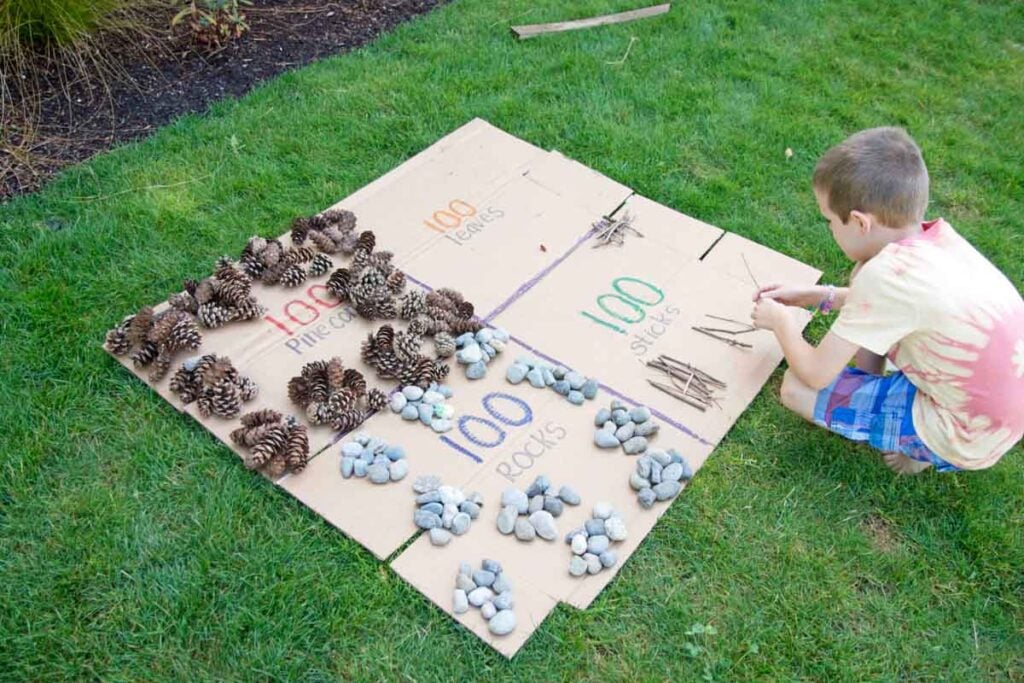
Learning Through Play: The Benefits of Outdoor Counting
This outdoor counting activity does so much more than just teach numbers. It builds:
- Fine motor skills as kids pick up and group objects.
- Critical thinking as they compare sizes and groupings.
- Problem-solving as they decide what objects to collect and how to organize them.
And, best of all, it’s sittervising gold. Kids are busy collecting, counting, and organizing while you sit back, relax, and watch the learning unfold.
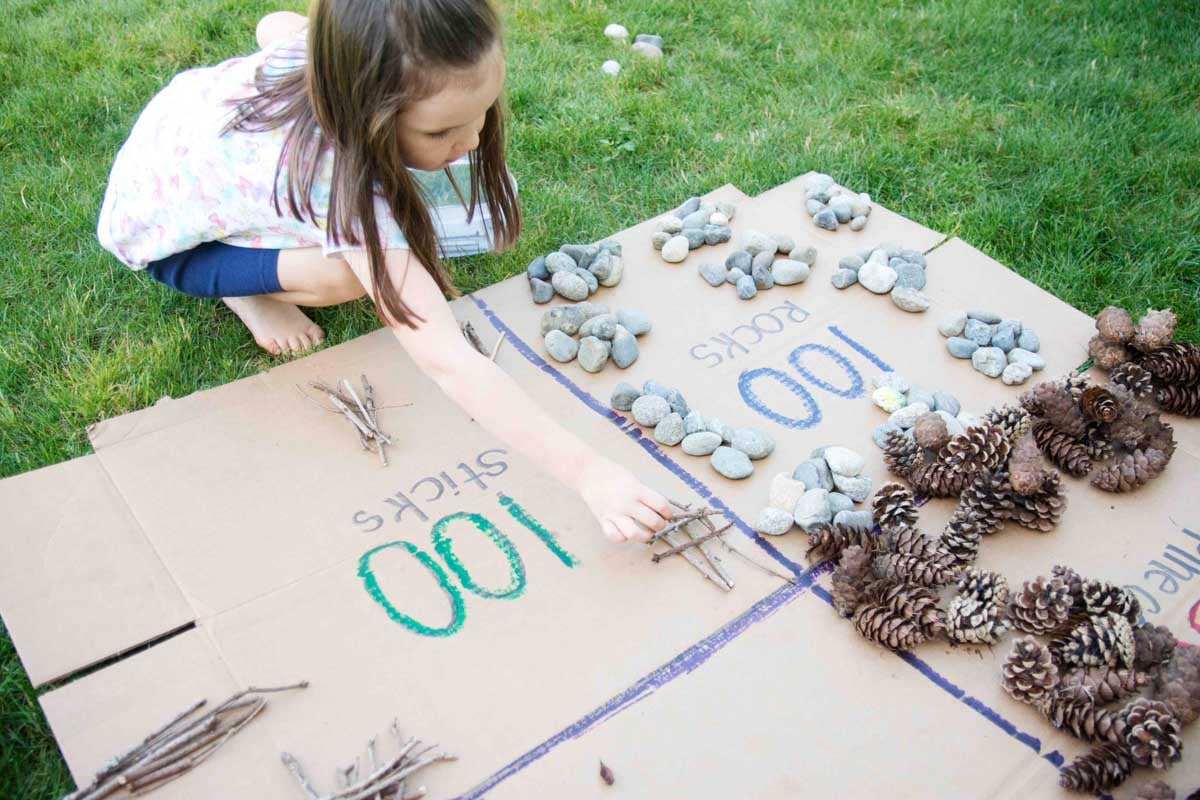
Learning Standards Addressed
If you have a school-age child, here are the Common Core State Standards that this activity addresses:
Kindergarten:
- CCSS.Math.Content.K.CC.A.1: Count to 100 by ones and by tens.
- CCSS.Math.Content.K.CC.B.4.a: Pair each object with one and only one number name in the standard order.
- CCSS.Math.Content.K.CC.B.4.b: Understand that the last number name said tells the number of objects counted, regardless of their arrangement or order.
First Grade:
- CCSS.Math.Content.1.NBT.B.2.a: Understand that 10 can be thought of as a bundle of ten ones — called a “ten.”
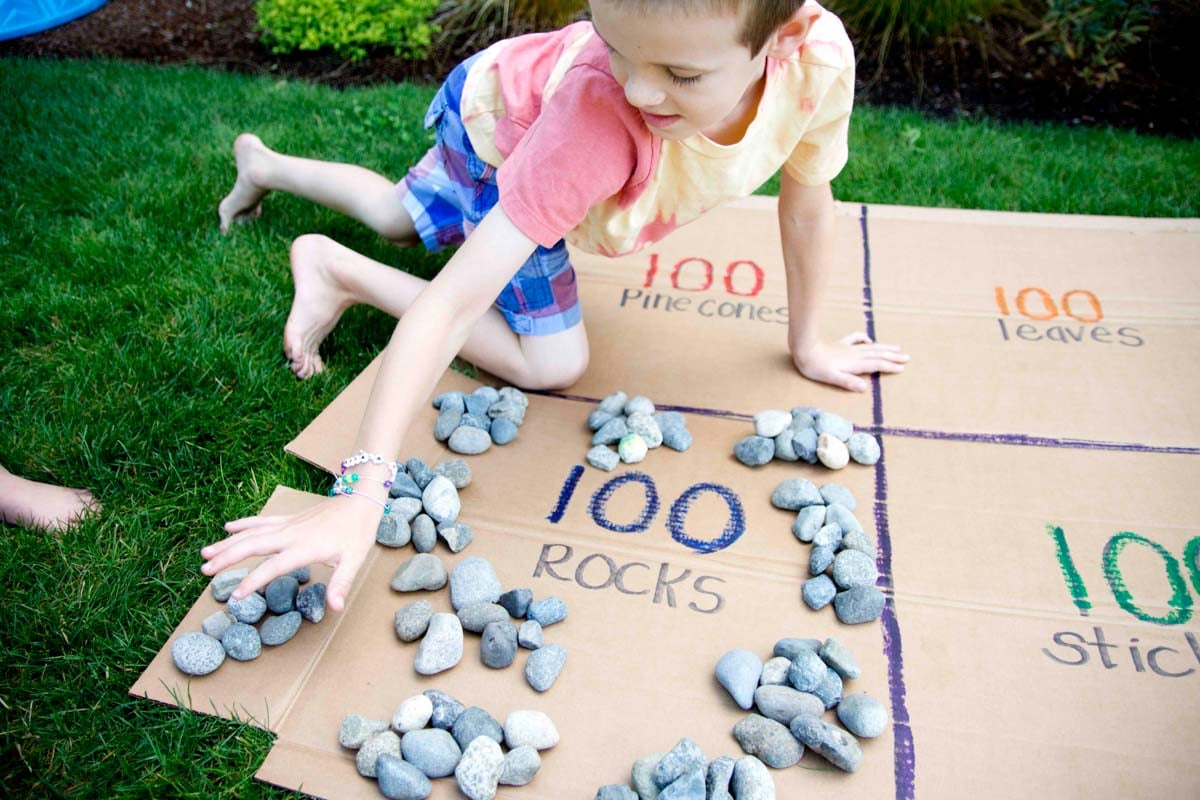
Making the Abstract Concrete: Why 100 Matters
For young children, the number 100 is enormous — it’s practically mythical! By turning it into something tangible, something they can see, touch, and manipulate, it becomes real.
Suddenly, 100 isn’t just a number they hear; it’s a collection of rocks, sticks, leaves, and pine cones that they built themselves.
RELATED: Looking for more math activities? Check out this list!
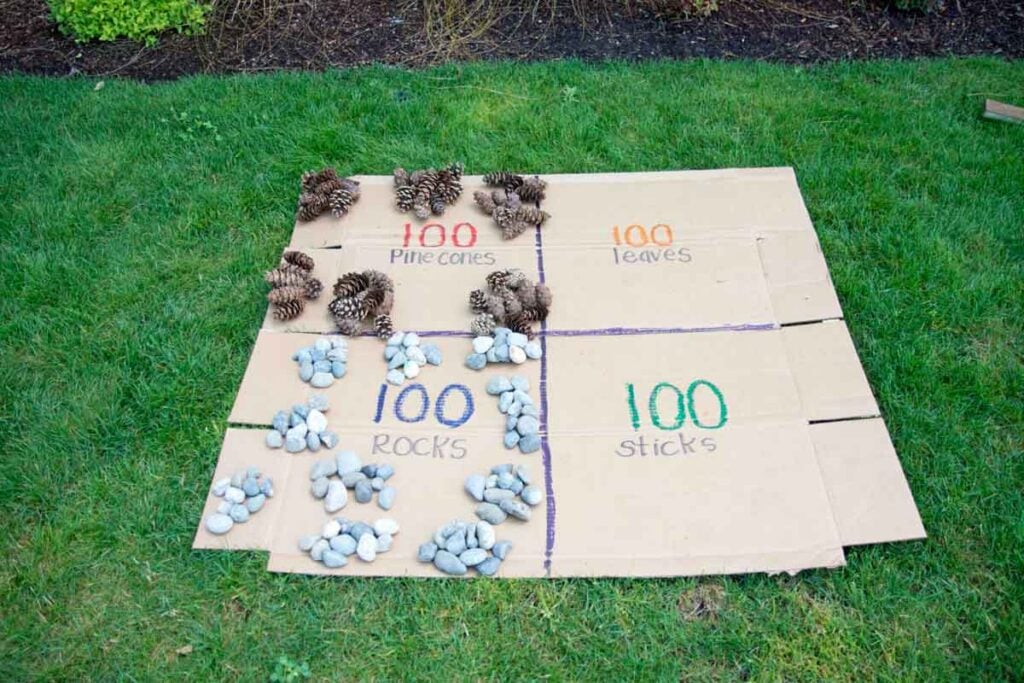
Extensions and Variations
Want to take this even further? Try these variations:
Work Up to 1,000: If 100 feels easy, challenge your child to count to 1,000 in groups of 100.
Add Color: Paint your sticks or leaves before counting for some extra flair.
Try Different Outdoor Settings: Do the activity at the beach with shells, at the park with acorns, or on a hike with pebbles.
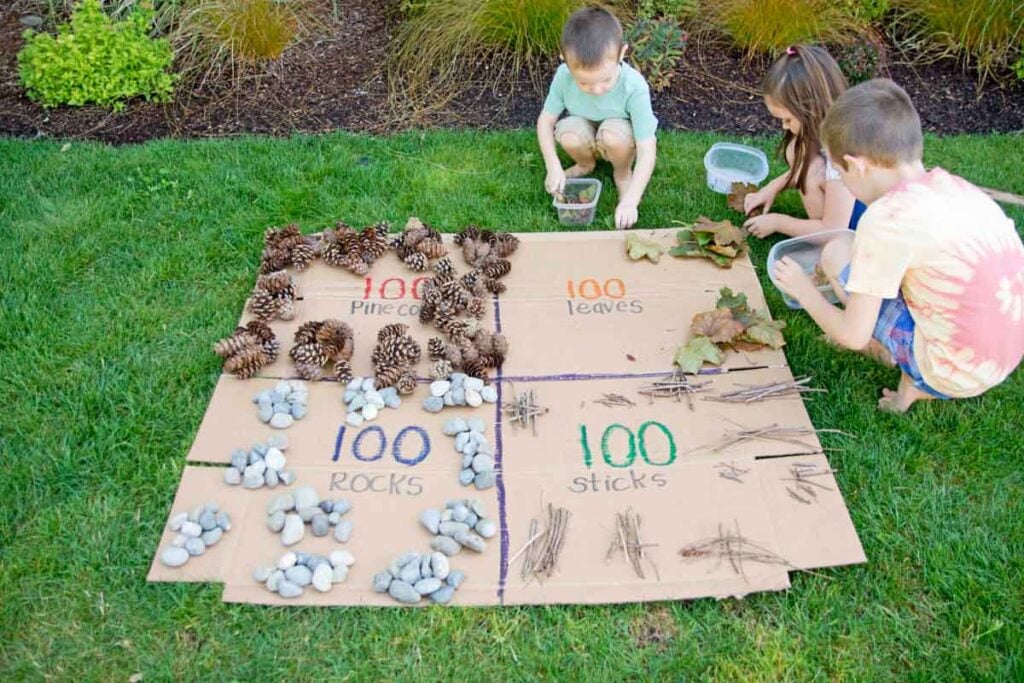
Why Outdoor Math Activities Matter
Outdoor math activities like this aren’t just about numbers. They’re about learning through experience, exploring nature, and understanding big concepts in a small, manageable way.
And best of all? It’s done with a bit of sittervising magic — because every parent deserves a moment to sit back while the learning happens

Susie Allison, M. Ed
Owner, Creator
Susie Allison is the creator of Busy Toddler and has more than 2.4 million followers on Instagram. A former teacher and early childhood education advocate, Susie has written two home learning curricula, Playing Preschool and Branches. Her parenting book “Busy Toddler’s Guide to Actual Parenting” is available on Amazon.







 Subscribe to my free newsletter and I’ll send you “35 Easy Toddler Activities to Break Up the Day!”
Subscribe to my free newsletter and I’ll send you “35 Easy Toddler Activities to Break Up the Day!”

Leave a Comment